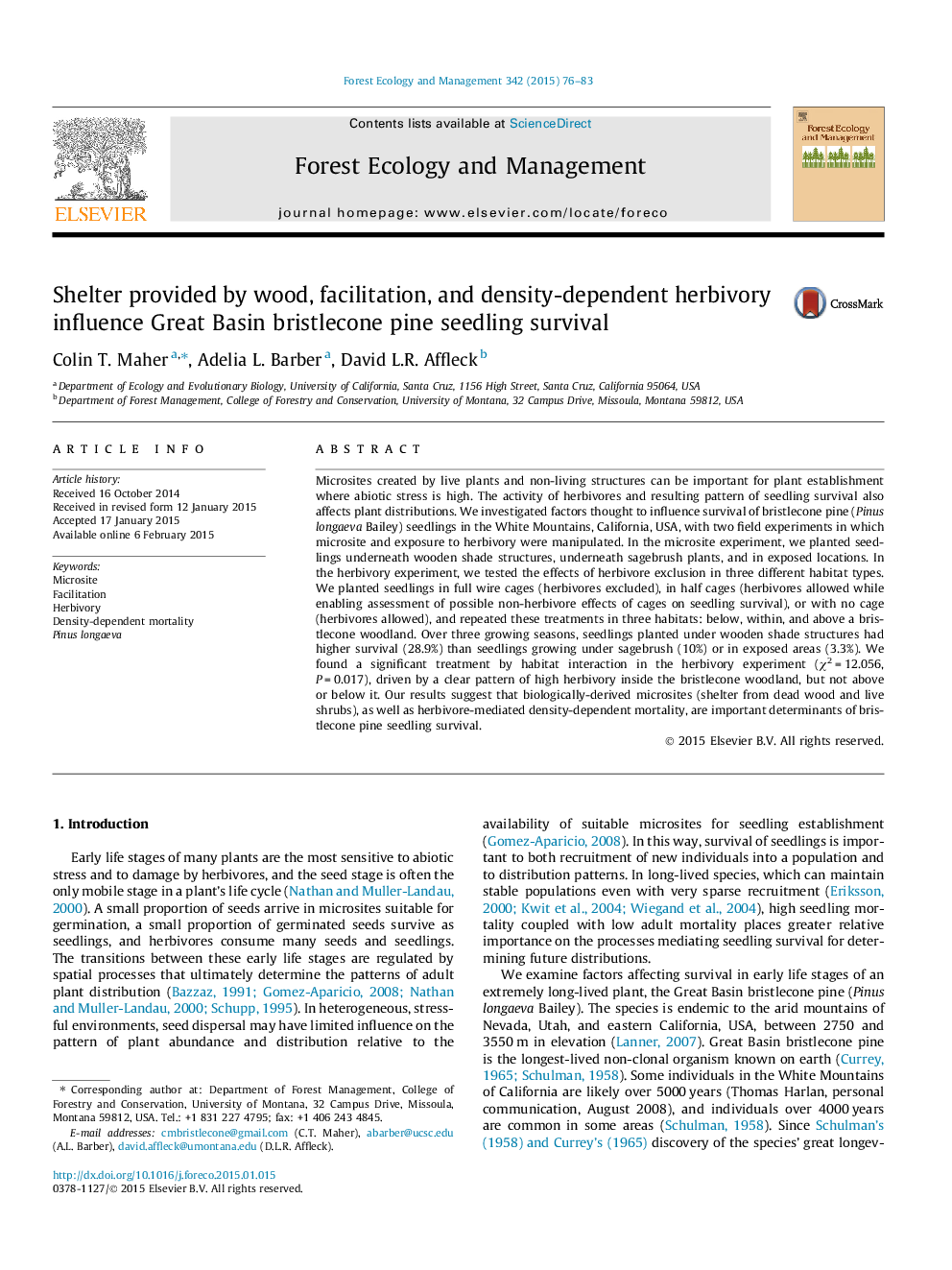| کد مقاله | کد نشریه | سال انتشار | مقاله انگلیسی | نسخه تمام متن |
|---|---|---|---|---|
| 86305 | 159177 | 2015 | 8 صفحه PDF | دانلود رایگان |
• Few studies have investigated factors affecting recruitment in bristlecone pine.
• We manipulated seedling microsite and exposure to herbivores in field experiments.
• Biologically-derived microsites mediate bristlecone seedling establishment.
• Herbivore-mediated density-dependent mortality may restrict seedling establishment.
Microsites created by live plants and non-living structures can be important for plant establishment where abiotic stress is high. The activity of herbivores and resulting pattern of seedling survival also affects plant distributions. We investigated factors thought to influence survival of bristlecone pine (Pinus longaeva Bailey) seedlings in the White Mountains, California, USA, with two field experiments in which microsite and exposure to herbivory were manipulated. In the microsite experiment, we planted seedlings underneath wooden shade structures, underneath sagebrush plants, and in exposed locations. In the herbivory experiment, we tested the effects of herbivore exclusion in three different habitat types. We planted seedlings in full wire cages (herbivores excluded), in half cages (herbivores allowed while enabling assessment of possible non-herbivore effects of cages on seedling survival), or with no cage (herbivores allowed), and repeated these treatments in three habitats: below, within, and above a bristlecone woodland. Over three growing seasons, seedlings planted under wooden shade structures had higher survival (28.9%) than seedlings growing under sagebrush (10%) or in exposed areas (3.3%). We found a significant treatment by habitat interaction in the herbivory experiment (χ2 = 12.056, P = 0.017), driven by a clear pattern of high herbivory inside the bristlecone woodland, but not above or below it. Our results suggest that biologically-derived microsites (shelter from dead wood and live shrubs), as well as herbivore-mediated density-dependent mortality, are important determinants of bristlecone pine seedling survival.
Journal: Forest Ecology and Management - Volume 342, 15 April 2015, Pages 76–83
